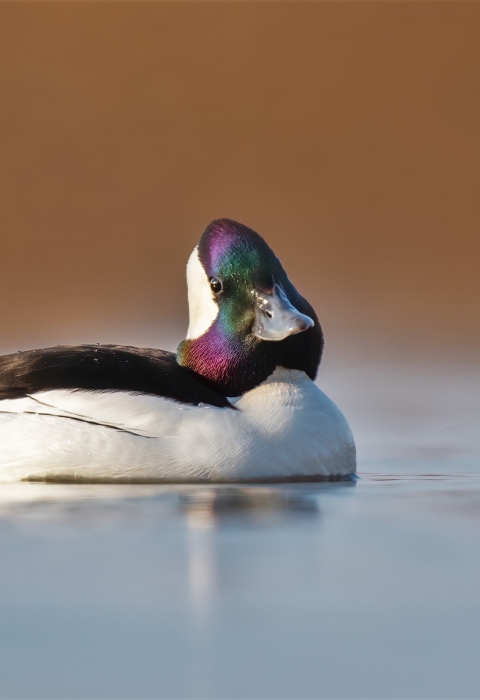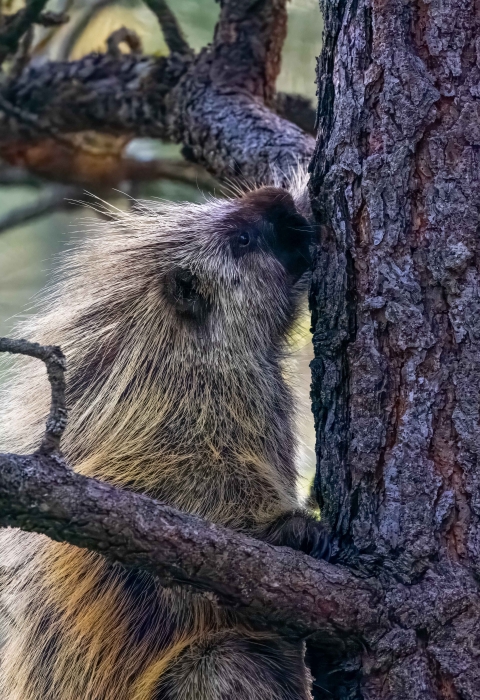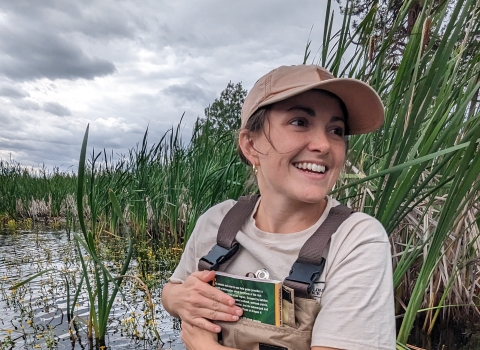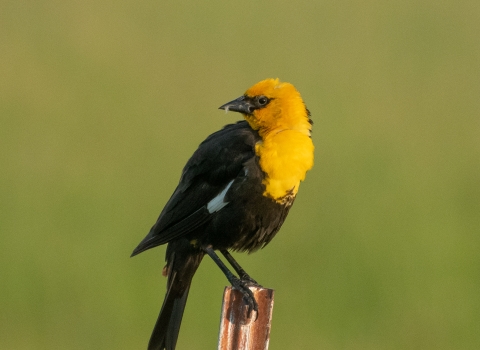Projects and Research
Since the first lands were purchased establishing the refuge, research have been completed on the refuge to better understand the natural and cultural resources of the Channeled Scablands ecosystems. Research has been conducted by refuge biological staff and students and professors from several universities. Research topics covered have included: wildlife habitat relationships, limnology, nesting ecology of cavity nesting birds, roosting ecology of bats, predator/prey interactions, effects of management actions on wildlife populations and habitats, impacts of invasive species invasive species
An invasive species is any plant or animal that has spread or been introduced into a new area where they are, or could, cause harm to the environment, economy, or human, animal, or plant health. Their unwelcome presence can destroy ecosystems and cost millions of dollars.
Learn more about invasive species on refuge ecosystems, insect/plant co-evolution, fire effects on the ecology of individual plant species, plant communities, animal/plant relationships, and the impact of native browsers on plant growth and development.
In the past decade, the refuge has hosted between 10 to 20 research projects annually. Although researchers from as far away as University of Illinois, the University of Alberta, Canada and the University of California at Santa Cruz, the large majority of researchers have come from local colleges and universities including Eastern Washington University, Washington State University, Gonzaga University, University of Idaho, and the University of Washington. Eastern Washington University, which is just a few miles north of the refuge in the City of Cheney, has operated a research facility on the refuge under a cooperative agreement with the Service since 1973. This is the only facility of this type in the National Wildlife Refuge System. Its presence on the refuge has resulted in a strong research relationship with the University.
The refuge has worked with several of these universities to complete research directed at filling information gaps that hinder the development of management strategies to achieve wildlife and habitat objectives. This type of research is given priority in the approval process. All potential researchers are required to submit a research proposal for review and recommendation by the Refuge Biologist and approval by the Refuge Manager. The refuge has mostly limited research to 6 concurrently run projects. Proposals are reviewed for their potential benefit to the Refuge, Ecoregion and Region, their compatibility with the refuge purposes, and the possibility of conflicts with on-going studies, refuge monitoring efforts and management activities. Once a project is approved, a Special Use Permit is issued that may stipulate certain special conditions to minimize impacts to refuge resources and conflicts.
You can help refuge staff by logging all of your observations on iNaturalist. This free app allows naturalists from all across the world collect and share their observations. The community on iNaturalist can help identify unknown species, track invasive species, and monitor phenological changes. What’s more, by recording and sharing your observations...
Refuge staff have begun to actively monitor wildlife-vehicle collisions in an effort to document and eventually mitigate wildlife mortalities. Staff are using the Roadkill Observation and Data System (ROaDS app), a tool developed jointly by the Branch of Transportation and Data Management and the Infrastructure Management Division. The app uses the EsriArcGIS platform to log data points...
Monitoring is a vital task at any National Wildlife Refuge.
Wildlife MonitoringStaff monitor wildlife to inform management actions, and then monitor wildlife after management actions to make sure that what was done was beneficial, or if a change in strategy is needed.
Staff can’t monitor every type of wildlife, but some waterfowl species are good indicators of wetland...
As outlined in the Comprehensive Conservation Plan (CCP), the refuge exists to provide habitat conditions essential to the conservation of migratory birds and other wildlife in a variety of wetland complexes. Managers use a variety of tools to achieve this goal.
Wetland Restoration
Wetland restoration often involves the use of heavy equipment to achieve management...




